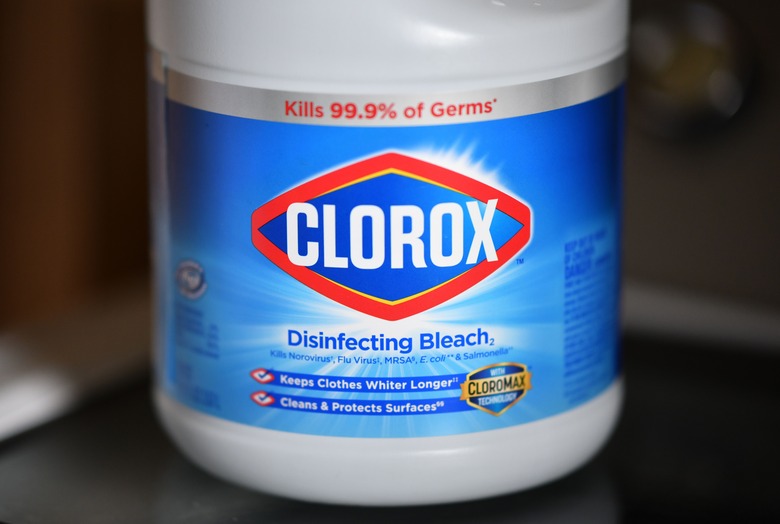Why Is Mixing Ammonia And Bleach Dangerous?
We may receive a commission on purchases made from links.
Household bleach should never be mixed with other cleaning products, especially ammonia. Bleach, also known as chlorine bleach, is mostly water, but it also contains 5 to 8 percent of sodium hypochlorite. When bleach is mixed with cleaners containing ammonia, the combination releases a compound called chloramine gas, which is toxic.
Tip
Mixing ammonia and bleach can produce toxic fumes that can lead to death in rare instances.
Bleach and Ammonia
Bleach and Ammonia
It helps to know what is in both bleach and ammonia so you don't mix these two common household cleaners by mistake, triggering toxic, potentially life-threatening fumes. The active ingredient in household bleach, sodium hypochlorite, can be irritating by itself when used in a poorly ventilated room.
When mixed with ammonia, chloramine gas is released. When mixed with an acid, like vinegar or urine, chlorine gas is released. These mixtures result in toxic fumes, which can cause all sorts of breathing problems and other health problems. Ammonia is often used by itself as a household cleaner and is found in some glass and window cleaners, interior and exterior paints, and urine, especially in litter boxes, diaper pails and toilet bowls.
If you mix these together indoors, it's important to get everyone out of the room and close the door. Before you go, open a window and turn on a vent fan. Leave the room and stay away until the smell has dissipated. Keep children and pets away from the contaminated area.
Health Hazards to Watch For
Health Hazards to Watch For
When bleach is mixed with ammonia, do not continue to breathe in the fumes. If you accidentally breathe in a combination of bleach and ammonia, remember that the combination, while toxic, only rarely results in cases needing medical attention.
If you are worried that you have ingested toxic fumes from bleach and ammonia, there's a list of symptoms to watch for, including:
- Coughing.
- Shortness of breath.
- Watery eyes.
- Chest pain.
- Throat, nose or eye irritation.
- Wheezing.
- Fluid in the lungs.
- Nausea.
If you feel these symptoms coming on after breathing in a combination of bleach and ammonia, don't hesitate to call your health care provider or the local poison control center. Describe the combination of household products that caused the toxic fumes.
Preventive Measures to Take
Preventive Measures to Take
When it comes to household cleaning products, there are many precautions to take to ensure your health and that of your family. Most important, learn what household products you have that might contain bleach. Bleach is not only found in products labeled "bleach" but also in all-purpose cleaners, bathroom cleaners and dish detergents. When using bleach to sanitize, the only ingredient you should add is water.
If you spill a cleaner with bleach, do not attempt to clean up the spill with a cleaner that might contain ammonia or ammonium hydroxide. Remember that ammonia is a common ingredient in window cleaners. There are other acids that don't mix well with bleach, including vinegar, automatic dishwasher detergent, toilet bowl cleaners, hydrogen peroxide, drain cleaners and rust removal cleaners.
So if you've just bleached stains out of your sink, don't add drain cleaner or rust remover to your sink. Also, pool chemicals should never be mixed with other cleaning products. It's best never to mix household cleaners. If you do mix any cleaners, read warning labels. Most cleaning products come with labels that warn of potential toxicities.
References
- Missouri Poison Center: Some Things Just Don't Mix: Poison Control Tips for Chemicals
- Washington State Department of Health: Dangers of Mixing Bleach With Cleaners
- Environmental Working Group: Tragic Accidental Death From Mixture of Cleaning Products: A Cautionary Warning
- Water Quality & Health Council: What Can You Safely Mix With Bleach?
